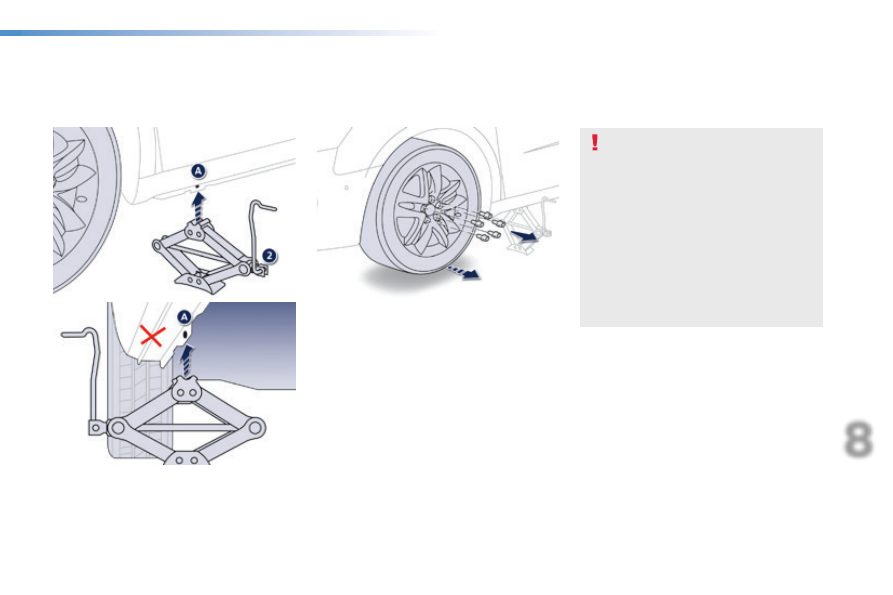Peugeot 508 (2016 year). Manual - part 16

239
8
In the event of a breakdown
508_en_Chap08_en-cas-de-pannes_ed01-2016
F Raise the vehicle until there is sufficient
space between the wheel and the ground
to admit the spare (not punctured) wheel
easily.
F Remove the bolts and store them in a clean
place.
F Remove the wheel.
F extend the jack 2 until its head comes into
contact with the jacking point A or B used;
the vehicle's contact surface at A or B must
engage with the central part of the head of
the jack.
ensure that the jack is stable. If the
ground is slippery or loose, the jack
might slip or drop - Risk of injury!
take care to position the jack only at
one of the vehicle's jacking points A
or B under the vehicle, ensuring that the
contact surface of the vehicle's jacking
point is centred on the head of the jack.
Otherwise there is a risk of damage to
the vehicle and/or that the jack might
drop - Risk of injury!